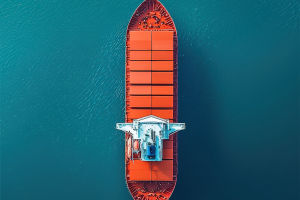A reef is a ridge of material at or near the surface of the ocean. Reefs can occur naturally. Natural reefs are made of rocks or the skeletons of small animals called corals. Reefs can also be artificial—created by human beings.
Reefs in the Great Lakes are made of rocks, not coral , but high-quality reef habitat is still critical for native fish including lake trout, lake whitefish, cisco, walleye, smallmouth bass and yellow perch. During spawning season, these fish use reefs to deposit and protect eggs.
Scientists generally agree on four different coral reef classifications: fringing reefs, barrier reefs, atolls, and patch reefs . Fringing reefs grow near the coastline around islands and continents. They are separated from the shore by narrow, shallow lagoons. Fringing reefs are the most common type of reef.
An example of a reef is the Great Barrier Reef which was formed when the sea levels rose, flooding the continental shelf of Australia, allowing the coral that were growing on the edges of the shelf to grow and begin to form the reef.
Coral reefs begin to form when free-swimming coral larvae attach to submerged rocks or other hard surfaces along the edges of islands or continents. As the corals grow and expand, reefs take on one of three major characteristic structures — fringing, barrier or atoll.
Artificial Reefs
People create reefs for three chief reasons. The first is to protect the coastline. Reefs act as barriers between the coast and powerful ocean storms. In this way, reefs also protect coastlines from erosion. The Maldives, an island nation in the Indian Ocean, has constructed reefs to protect its low-lying coral islands from cyclones and other factors that may lead to beach erosion.
Natural Reefs
There are several types of natural reefs. “Live-bottom” reefs are ledges or outcroppings of rock. Organisms such as sea anemones and seaweeds attach themselves directly to this rock, forming a live-bottom reef for fish and plants. The jagged rocks provide overhangs and protection for fish and other marine life, such as seals.
A lake is an area filled with water, localized in a basin, surrounded by land, and distinct from any river or other outlet that serves to feed or drain the lake. Lakes lie on land and are not part of the ocean, although, like the much larger oceans, they do form part of the Earth's water cycle. Lakes are distinct from lagoons, which are generally coastal parts of the ocean. Lakes are typically larger and deeper than ponds, which also lie on land, though there are no official or scientific definitions. Lakes can be contrasted with rivers or streams, which usually flow in a channel on land. Most lakes are fed and drained by rivers and streams.
Lakes are highly valued for their recreational, aesthetic, scenic, and water-supply qualities, and the water they contain is one of the most treasured of our natural resources. Lakes constitute important habitats and food resources for a diverse array of fish, aquatic life, and wildlife.
Natural lakes are generally found in mountainous areas, rift zones, and areas with ongoing glaciation. Other lakes are found in endorheic basins or along the courses of mature rivers, where a river channel has widened into a basin.
some uses of lakes are:
Develop hydroelectric power.
They provide water supply for the purpose of irrigation.
Provide fresh water for drinking.
Industries and factories use river and lake water for their functioning.
Supply water for irrigation in agricultural fields.
Help to develop the fisheries.


